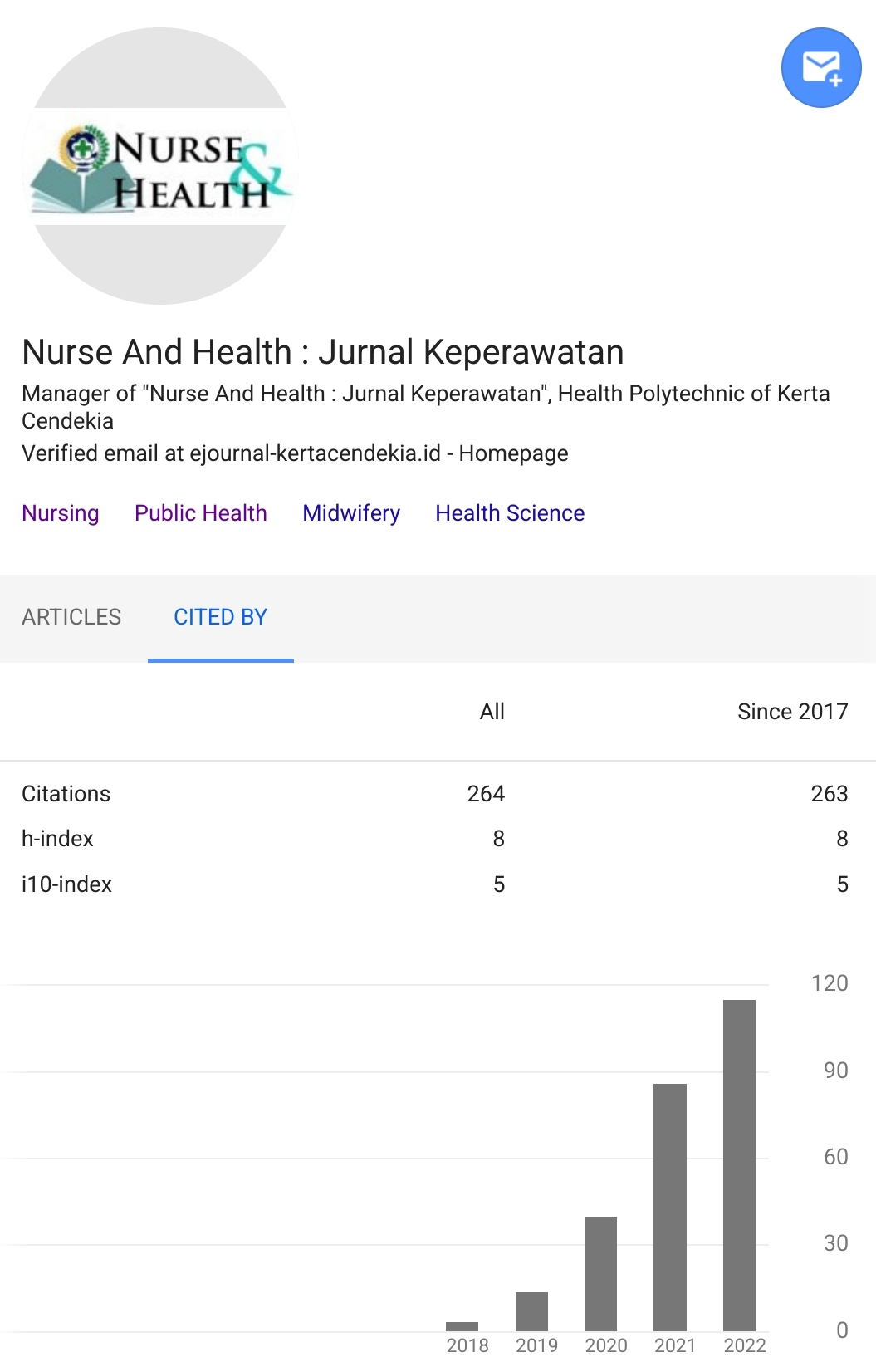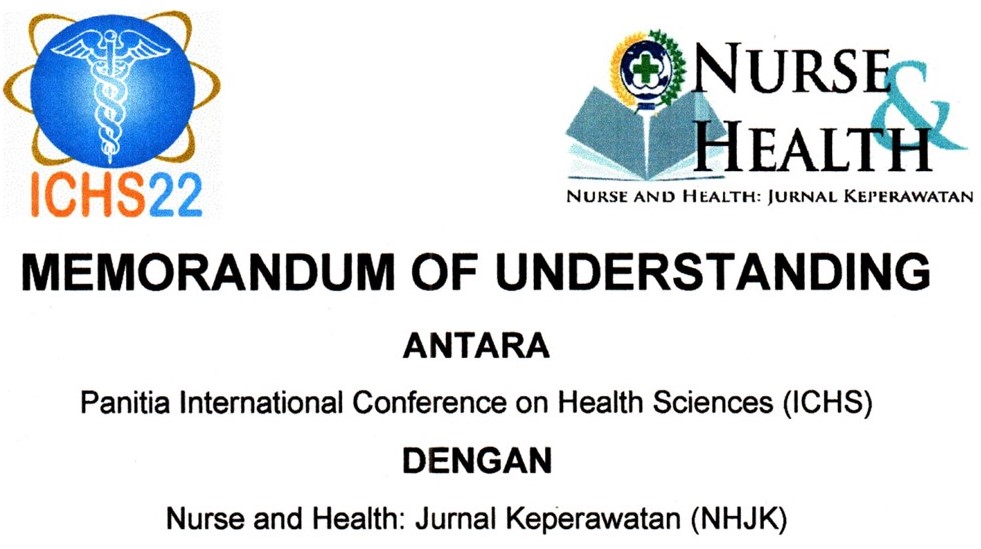DETERMINANTS OF MYOCARDIAL INFARCTION OUTCOMES IN A NON-PERCUTANEOUS CORONARY INTERVENTION HOSPITAL IN JAKARTA
Abstract
Background: Global cardiovascular challenges persist, notably in myocardial infarction (MI). Despite studying factors such as age, sex, MI type, and comorbidities impacting survival, knowledge gaps exist, particularly in Indonesia without recent MI data, especially in non-PCI settings. Objectives: This study seeks to bridge the knowledge gap concerning determinants of post-MI survival in hospitals without PCI facilities in Jakarta, Indonesia. Methods: Adopting a retrospective cross-sectional design, 112 medical record patients from an Emergency Department of non-PCI hospital in Jakarta were selected via purposive sampling. A structured checklist was utilized to assess 16 variables and the primary endpoint was post-treatment status. The study employed Chi-square, Fisher's exact, and Likelihood ratio tests to analyze the relationship between demographics, risk Factors, and MI treatment access and the post-treatment status. Results: Results highlighted that of 112 myocardial infarction (MI) patients, males constituted 70.5%, with Non-ST Elevation Myocardial Infarction as the predominant subtype (57.1%). Most participants (86.6%) were ≥45 years old. Prevalence rates included hypertension (56.3%), Diabetes Mellitus (40.2%), Congestive Heart Failure (42.0%), and prior MI (27.7%). Post-MI survival stood at 92.9%, with 7.1% mortality. The results revealed a significant correlation between cardiogenic shock and MI outcomes (p=0.000), indicating a protective advantage (OR: 0.018) for those without cardiogenic shock against MI-related mortality. Conclusion: While cardiogenic shock has been reaffirmed as the sole predictor of post-myocardial infarction mortality in our study, it's crucial to heighten awareness of other MI determinants, including age, gender disparities, smoking status, and the dynamics of therapeutic measures. This underlines the pressing need for early identification and evidence-based management strategies.Downloads
References
Afana, M., Koenig, G. C., Seth, M., Sukul, D., Frazier, K. M., Fielding, S., … Gurm, H. S. (2020). Trends and outcomes of non-primary PCI at sites without cardiac surgery on-site: The early Michigan experience. PLoS ONE, 15(8 August), 1–15. https://doi.org/10.1371/journal.pone.0238048 DOI: https://doi.org/10.1371/journal.pone.0238048
Aggarwal, N. R., Patel, H. N., Mehta, L. S., Sanghani, R. M., Lundberg, G. P., Lewis, S. J., … Mieres, J. H. (2018). Sex Differences in Ischemic Heart Disease: Advances, Obstacles, and Next Steps. Circulation: Cardiovascular Quality and Outcomes, 11(2), 1–14. https://doi.org/10.1161/CIRCOUTCOMES.117.004437 DOI: https://doi.org/10.1161/CIRCOUTCOMES.117.004437
Alencar Neto, J. N. de. (2018). Morphine, Oxygen, Nitrates, and Mortality Reducing Pharmacological Treatment for Acute Coronary Syndrome: An Evidence-based Review. Cureus, 10(1), 1–13. https://doi.org/10.7759/cureus.2114 DOI: https://doi.org/10.7759/cureus.2114
Alhabib, K. F., Kinsara, A. J., Alghamdi, S., Al-Murayeh, M., Hussein, G. A., AlSaif, S., … AlHarbi, I. A. (2019). The first survey of the Saudi Acute Myocardial Infarction Registry Program: Main results and long-term outcomes (STARS-1 Program). PLoS ONE, 14(5), 1–20. https://doi.org/10.1371/journal.pone.0216551 DOI: https://doi.org/10.1371/journal.pone.0216551
Banks, E., Joshy, G., Korda, R. J., Stavreski, B., Soga, K., Egger, S., … Lopez, A. D. (2019). Tobacco smoking and risk of 36 cardiovascular disease subtypes: Fatal and non-fatal outcomes in a large prospective Australian study. BMC Medicine, 17(1), 1–18. https://doi.org/10.1186/s12916-019-1351-4 DOI: https://doi.org/10.1186/s12916-019-1351-4
British Heart Foundation. (2022). UK Factsheet. British Heart Foundation, (August), 1–21. Retrieved from https://www.bhf.org.uk/-/media/files/research/heart-statistics/bhf-cvd-statistics-uk-factsheet.pdf?rev=4b0be2cd03eb412f8f2703b63a3b4ebb&hash=E6965279D61DEA4CBD0C97E176CAA671
Chen, S., Huang, Z., Chen, L., Zhao, X., Kang, Y., Lai, W., … Chen, J. (2021). Does Diabetes Mellitus Increase the Short- and Long-Term Mortality in Patients With Critical Acute Myocardial Infarction? Results From American MIMIC-III and Chinese CIN Cohorts. Frontiers in Endocrinology, 12(797049), 1–8. https://doi.org/10.3389/fendo.2021.797049 DOI: https://doi.org/10.3389/fendo.2021.797049
Degano, I. R., Subirana, I., Fusco, D., Tavazzi, L., Kirchberger, I., Farmakis, D., … Marrugat, J. (2017). Percutaneous coronary intervention reduces mortality in myocardial infarction patients with comorbidities: Implications for elderly patients with diabetes or kidney disease. International Journal of Cardiology, 249, 83–89. https://doi.org/http://dx.doi.org/10.1016/j.ijcard.2017.07.054 DOI: https://doi.org/10.1016/j.ijcard.2017.07.054
Dharma, S., Andriantoro, H., Purnawan, I., Dakota, I., Basalamah, F., Hartono, B., … Rao, S. V. (2016). Characteristics, treatment and in-hospital outcomes of patients with STEMI in a metropolitan area of a developing country: an initial report of the extended Jakarta Acute Coronary Syndrome registry. BMJ Open, 6(8), 1–10. https://doi.org/10.1136/BMJOPEN-2016-012193 DOI: https://doi.org/10.1136/bmjopen-2016-012193corr1
Dharmarajan, K., McNamara, R. L., Wang, Y., Masoudi, F. A., Ross, J. S., Spatz, E. E., … Curtis, J. P. (2017). Age differences in hospital mortality for acute myocardial infarction: Implications for hospital profiling. Annals of Internal Medicine, 167(8), 555–564. https://doi.org/10.7326/M16-2871 DOI: https://doi.org/10.7326/M16-2871
Duckworth, R. (2020). Nitroglycerin: Major actions and misconceptions. Retrieved June 17, 2023, from https://www.ems1.com/ems-products/medical-monitoring/articles/nitroglycerin-major-actions-and-misconceptions-7j3y8hSw5MzSKU9S/#:~:text=Desired effects and indications of nitroglycerin&text=For EMS providers%2C typical nitroglycerin,as pulmonary edema with
Gawinski, L., Burzynska, M., Marczak, M., & Kozlowski, R. (2023). Assessment of In-Hospital Mortality and Its Risk Factors in Patients with Myocardial Infarction Considering the Logistical Aspects of the Treatment Process-A Single-Center, Retrospective, Observational Study. International Journal of Environmental Research and Public Health, 20(4), 1–20. https://doi.org/10.3390/ijerph20043603 DOI: https://doi.org/10.3390/ijerph20043603
Hashmi, K. A., Abbas, K., Hashmi, A. A., Irfan, M., Edhi, M. M., Ali, N., & Khan, A. (2018). In-hospital mortality of patients with cardiogenic shock after acute myocardial infarction; Impact of early revascularization. BMC Research Notes, 11(1), 1–5. https://doi.org/10.1186/s13104-018-3830-7 DOI: https://doi.org/10.1186/s13104-018-3830-7
Kochar, A., Chen, A. Y., Sharma, P. P., Pagidipati, N. J., Fonarow, G. C., Cowper, P. A., … Wang, T. Y. (2018). Long-term mortality of older patients with acute myocardial infarction treated in US clinical practice. Journal of the American Heart Association, 7(13). https://doi.org/10.1161/JAHA.117.007230 DOI: https://doi.org/10.1161/JAHA.117.007230
Medina, M. S., Cortés, D. R. G., Siscar, J. L. P., & Fernández, A. R. R. (2018). Predictive Factors of Mortality in Acute Myocardial Infarction. CorSalud, 10(3), 202–210.
Mozaffarian, S., Etemad, K., Aghaali, M., Khodakarim, S., Ghorbani, S. S., & Nazari, S. S. H. (2021). Short and long-term survival rates following myocardial infarction and its predictive factors: A study using national registry data. Journal of Tehran University Heart Center, 16(2), 68–74. https://doi.org/10.18502/jthc.v16i2.7387 DOI: https://doi.org/10.18502/jthc.v16i2.7387
Pramudyo, M., Yahya, A. F., Martanto, E., Tiksnadi, B. B., Karwiky, G., Rafidhinar, R., & Putri, G. N. I. (2022). Predictors of In-Hospital Mortality in Patients with Acute Coronary Syndrome in Hasan Sadikin Hospital, Bandung, Indonesia: A Retrospective Cohort Study. Acta Medica Indonesiana, 54(3), 379–388.
Rafi, A., Sayeed, Z., Sultana, P., Aik, S., & Hossain, G. (2020). Pre-hospital delay in patients with myocardial infarction: An observational study in a tertiary care hospital of northern Bangladesh. BMC Health Services Research, 20(1), 1–12. https://doi.org/10.1186/s12913-020-05505-x DOI: https://doi.org/10.1186/s12913-020-05505-x
Shah, A. H., Puri, R., & Kalra, A. (2019). Management of cardiogenic shock complicating acute myocardial infarction: A review. Clinical Cardiology, 42(4), 484–493. https://doi.org/10.1002/clc.23168 DOI: https://doi.org/10.1002/clc.23168
Subahi, A., Abdullah, A., Yassin, A. S., Abubakar, H., Abugroun, A., Eigbire, G., … Mohamad, T. (2018). Impact and Outcomes of Patients with Congestive Heart Failure Complicating Non-ST-Segment Elevation Myocardial Infarction,Results from a Nationally-Representative United States Cohort. Cardiovascular Revascularization Medicine, 20(8), 659–662. https://doi.org/10.1016/j.carrev.2018.09.008 DOI: https://doi.org/10.1016/j.carrev.2018.09.008
Takagi, K., Tanaka, A., Yoshioka, N., Morita, Y., Yoshida, R., Kanzaki, Y., … Murohara, T. (2021). In-hospital mortality among consecutive patients with ST-Elevation myocardial infarction in modern primary percutaneous intervention era ~ Insights from 15-year data of single-center hospital-based registry ~. PLoS ONE, 16(6), e0252503. https://doi.org/10.1371/journal.pone.0252503 DOI: https://doi.org/10.1371/journal.pone.0252503
Tsao, C. W., Aday, A. W., Almarzooq, Z. I., Alonso, A., Beaton, A. Z., Bittencourt, M. S., … Martin, S. S. (2022). Heart Disease and Stroke Statistics-2022 Update: A Report from the American Heart Association. Circulation, 145(8), E153–E639. https://doi.org/10.1161/CIR.0000000000001052 DOI: https://doi.org/10.1161/CIR.0000000000001052
Wasyanto, T., & Tridamayanti, A. (2019). Blood Urea Nitrogen as a Predictor of In-Hospital Mortality in Acute Coronary Syndrome Patients. Indonesian Journal of Medicine, 4(3), 241–251. https://doi.org/10.26911/theijmed.2019.04.03.07 DOI: https://doi.org/10.26911/theijmed.2019.04.03.07
Copyright (c) 2023 Wiwin Winarti, Talitha Syifa Laili

This work is licensed under a Creative Commons Attribution-NonCommercial 4.0 International License.
Authors who publish with Nurse and Health: Jurnal Keperawatan agree to the following terms:
- Authors retain copyright licensed under a Creative Commons Attribution-NonCommercial 4.0 (CC BY-NC 4.0), which allows others to remix, tweak, and build upon the authors' work non-commercially, and although the others' new works must also acknowledge the authors and be non-commercial, they don't have to license their derivative works on the same terms.
- Authors are permitted and encouraged to post their work online (e.g., in institutional repositories or on their website) prior to and during the submission process, as it can lead to productive exchanges, as well as earlier and greater citation of published work (See The Effect of Open Access). Authors can archive pre-print and post-print or publisher's version/PDF.








_resize1.jpg)















